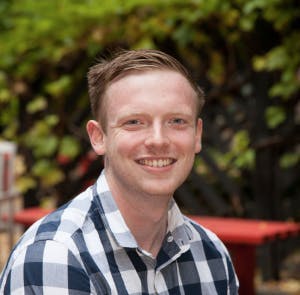Mind the Gap (2/2): Environmental Behavior and Observed Consequences
Go With The Flow
Frequently, consumers do not behave rationally when making decisions [7]. Even when faced with more beneficial alternatives, consumers tend to revert to a known ‘default’ choice, or ‘go with the flow’ and choose a pre-set option that is provided to them [8]. The occurrence of this behavior increases as the complexity of the information regarding the decision increases [9]. However, by ensuring consumers are provided with a green ‘default’ choice, consumers are much more likely to engage in green behavior.
"Schönau is a small German town with a population of 2500, located near the black forest. In 1997 a citizen’s initiative purchased the Schönau electrical grid and began purchasing its energy from renewable sources, such as solar energy. When the German electricity market was opened in 1998, this initiative became the EWS (elektrizitätswerke Schönau, the Schönau power company), and by default, the incumbent electricity supplier in Schönau."
If we fast forward to 2006, 1669 out of 1683 electricity meters in Schönau were still supplied with renewable derived electricity from EWS.10 Nearly every energy consumer in Schönau remained with the green, default provider. In nearby towns, where the default is non-renewable energy, only 1 % of electricity meters are supplied with electricity from renewable sources. Clearly, energy consumers are reluctant to change their ‘default’ tariff or provider, even when faced with superior monetary of environmental outcome.
References
[7] McFadden, D. L., The New Science of Pleasure. National Bureau of Economic Research Working Paper Series 2013, 18687.
[8] Frederiks, E. R.; Stenner, K.; Hobman, E. V., Household energy use: Applying behavioral economics to understand consumer decision-making and behavior. Renewable and Sustainable Energy Reviews 2015, 41, 1385-1394.
[9] Kahneman, D.; Knetsch, J. L.; Thaler, R. H., Anomalies: The Endowment Effect, Loss Aversion, and Status Quo Bias. Journal of Economic Perspectives 1991, 5 (1), 193-206.
[10] Pichert, D.; Katsikopoulos, K. V., Green defaults: Information presentation and pro-environmental behavior. Journal of Environmental Psychology 2008, 28 (1), 63-73.
[11] Wendy Wood, J. M. Q., Deborah A. Kashy, Habits in everyday life: Thought, emotion, and action. Personality and Social Psychology 2002, 83 (6), 1281-1297.
[12] Kahneman, D., A Psychological Perspective on Economics. American Economic Review 2003, 93 (2), 162-168.
[13] Bag Fees at Work: An Analysis of Reductions in Plastic Bags from Potomac River Watershed Cleanups 2007-2014, Alice Ferguson Foundation, 2015.
[14] Tatiana, A. H., Can Small Incentives Have Large Effects? The Impact of Taxes versus Bonuses on Disposable Bag Use. Proceedings. Annual Conference on Taxation and Minutes of the Annual Meeting of the National Tax Association 2012, 105, 64-90.
[15] Anja Lambrecht, C. T. The hassle factor London Business School Review [Online], 2010.
[16] (a) Peterson, E. A.; Dillon, B.; Raheem, I.; Richardson, P.; Richter, D.; Schmidt, R.; Sneddon, H. F., Sustainable chromatography (an oxymoron?). Green Chemistry 2014, 16 (9), 4060-4075; (b) Sneddon, H. In Computers In Chemistry, 251st ACS National Meeting, San Diego, ACS: San Diego, 2016.
[17] Alder, C. M.; Hayler, J. D.; Henderson, R. K.; Redman, A. M.; Shukla, L.; Shuster, L. E.; Sneddon, H. F., Updating and further expanding GSK’s solvent sustainability guide. Green Chemistry 2016, 18 (13), 3879-3890.
[18] MacMillan, D. S.; Murray, J.; Sneddon, H. F.; Jamieson, C.; Watson, A. J. B., Replacement of dichloromethane within chromatographic purification: a guide to alternative solvents. Green Chemistry 2012, 14 (11), 3016-3019.
[19] (a) Rasul, G., Managing the food, water, and energy nexus for achieving the Sustainable Development Goals in South Asia. Environmental Development 2016, 18, 14-25; (b) Bhaduri, A.; Ringler, C.; Dombrowski, I.; Mohtar, R.; Scheumann, W., Sustainability in the water–energy–food nexus. Water International 2015, 40 (5-6), 723-732.
[20] Rugolo, J.; Aziz, M. J., Electricity storage for intermittent renewable sources. Energy & Environmental Science 2012, 5 (5), 7151-7160.
About the Author
Tim Douglas
Tim is a PhD student at the Centre for Doctoral Training in Sustainable Chemistry at the University of Nottingham. Tim has an MSci in chemistry, also from the University of Nottingham, where he conducted research for GlaxoSmithKline. He is interested in utilizing behavioral science to foster sustainable consumption patterns.
About us
We are the leading applied research & innovation consultancy
Our insights are leveraged by the most ambitious organizations
“
I was blown away with their application and translation of behavioral science into practice. They took a very complex ecosystem and created a series of interventions using an innovative mix of the latest research and creative client co-creation. I was so impressed at the final product they created, which was hugely comprehensive despite the large scope of the client being of the world's most far-reaching and best known consumer brands. I'm excited to see what we can create together in the future.
Heather McKee
BEHAVIORAL SCIENTIST
GLOBAL COFFEEHOUSE CHAIN PROJECT
OUR CLIENT SUCCESS
$0M
Annual Revenue Increase
By launching a behavioral science practice at the core of the organization, we helped one of the largest insurers in North America realize $30M increase in annual revenue.
0%
Increase in Monthly Users
By redesigning North America's first national digital platform for mental health, we achieved a 52% lift in monthly users and an 83% improvement on clinical assessment.
0%
Reduction In Design Time
By designing a new process and getting buy-in from the C-Suite team, we helped one of the largest smartphone manufacturers in the world reduce software design time by 75%.
0%
Reduction in Client Drop-Off
By implementing targeted nudges based on proactive interventions, we reduced drop-off rates for 450,000 clients belonging to USA's oldest debt consolidation organizations by 46%



















